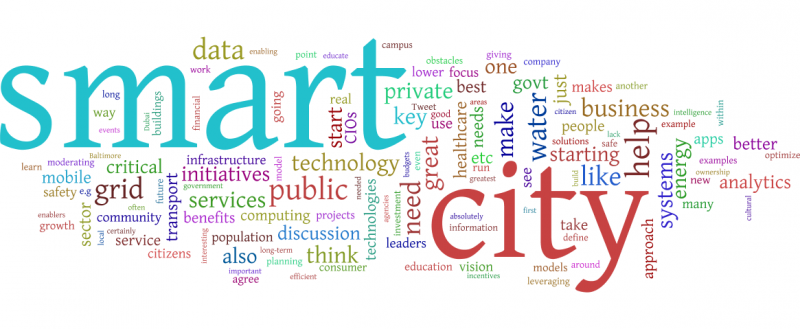
The world population will be almost 10 billion by the year 2050. This fact presents an unmatched challenge that shifts the responsibility to cities since as the UN approximates, 67% of this number will be living in urban areas. Urban environmental, social, demographic, and economic challenges will most likely be handled with one concept: smart cities. Consequently, governments from all over the world are day after day striving to develop smart cities in a bid to improve the lives of city inhabitants.
Features of a Smart City
Smart cities focus on the most crucial needs and greatest opportunities to improve lives. They tap an array of approaches like best urban planning practices, digital and information technologies, policy chance and public-private partnerships to make a change. People come fast.
Here is a summary of key smart city infrastructure features:
1. Assured electricity supply
2. Efficient public transportation and urban mobility
3. Adequate water supply
4. Efficient sanitation and solid waste management
5. Digitization and Strong IT connectivity
6. Sustainable environment
7. Affordable housing
8. Good governance and Citizen participation through e-governance
9. Sufficient healthcare facilities and education institutions
6 World Smart City Examples

Cities generate 80% of the world’s wealth. To improve city living, smart cities partner with developers, innovators, strategic thinkers, and big data specialists. Big companies like Cisco and IBM collaborate with universities and civic planning authorities focusing on energy use, improving public transport, law enforcement, waste management, and data-driven systems. Below are 6 inspiring smart cities from all over the world.
1. Seattle, US
The city of Seattle uses an adaptive transportation management system that enables traffic lights to adapt to changing weather and road conditions. To improve tech infrastructure, the city administrators created a new data center that can withstand earthquakes and other natural disasters. The City of Seattle, in partnership with the University of Washington, seeks to address a number of city problems including earthquake preparedness, reduction of carbon dioxide emission, and better transportation.
2. Barcelona, Spain
Barcelona is Spain’s second-largest city and has over 100 smart city projects. These range from electric vehicle charging infrastructure, smart lighting, Wi-Fi in public places and transport systems, and a Telecare that looks after over 70,000 disables and elderly citizens. The city hassled streetlights that are only activated when they detect motion. They save more than 30% energy. Other smart innovations are smart parking, streetlight sensors that collect environmental data, reduced Carbon emissions and smart garbage bins which only get emptied when full. Digital bus stops have USB charging pots.
3. Helsinki, Finland
Helsinki, Finland’s capital features innovation platforms for testing solutions and technology co-creation. Some of these are smart parking places that have car charging facilities, efficient waste collection systems that decrease garbage trucks by as much as 90% and apps that plan the most ideal routes with any method of transportation.
4. Songdo, South Korea
Songdo neighbors South Korea’s savvy capital Seoul. It has a sparkling skyline that was constructed from conception on reclaimed land. Waste is disposed of through an underground pipe system which transports it to processing plants where it gets stored and recycled. The city features online electric vehicle technology (OLEV) and remote controlled medical equipment. Buses moving across the city’s roads are automatically charged by magnetic fields from cables under the surface of the roads.
5. Island City State, Singapore
This city leverages on one of the best broadband and mobile penetration rates and features transport, municipal, health, and citizen-centric apps. There is sensor technology and smart public housing applications. Data obtained from these sensors is used to improve the planning, design, and maintenance of the city. By 2020, all vehicles in Singapore will have mandatory built-in satellite navigation systems where authorities will be capable of monitoring speed and traffic volume.
6. Milton Keynes, UK
This smart city has advanced transportation technology including the motion map application that describes people and vehicle movement around the city. There is also a sensor system which informs drivers of free parking spaces within the city. The city has also invested in a 1GBps network to support the city’s technological infrastructure.
Smart City Technology
The drive of many governments is promoting cities that provide key infrastructure and give citizens a decent quality life, smart solutions, and a clean sustainable environment.
1. Electric and Networked Transport
Smart cities are built in thousands of hectares land and the way people move around is a big concern. When it comes to smart city transport technology, New York City is a leader. The city government has proposed bettering its traffic flow through installing sensors in traffic lights and electric buses so that when a bus approaches any traffic light, either the red light changes to green in anticipation or the green light gets extended. This reduces travel time around the city by up to 20%. At the moment, Oslo in Norway is taking measures to reduce car carbon dioxide emissions by 50% by 2020. This is to be achieved by redesigning their transportation network and prohibiting private car circulation in the city.
2. Minimal paperwork
In 2013, Tel-Aviv in Israel started its transformation by bringing along a mobile application (DigiTel) from which residents can pay for water and other municipal bills, get parking permits, register for public school systems, and send photos for roads that are in a bad condition. A similar app has been created in Palo Alto (California, USA), where people can report incidents and get access to local services regardless of the time or day. Astana (Kazakhstan), Gijon (Spain), and Southampton (UK) among other smart cities have followed suit.
3. Smart healthcare systems
Asian tigers like South Korea, Japan, and Singapore now have incredible healthcare systems. Some of the hospitals have walking robots to transport files, blood samples, and drugs on the hospital’s buildings. These hospitals also have fiber optics in patient’s mattresses to check their temperatures and breathing.
4. Open and Transparent data
Concepts such as “Big Data” are a common development in smart cities. A number of municipal governments like those in Finish cities of Helsinki or Tampere collect information about their residents in regards to geographical position, traffic, city budget, and consumption. This is done to facilitate better governance.

Denis is an article/blog and content writer with over 3 years of experience in writing on different niches, including product reviews, buyer’s guide, health, travel, fitness, technology, tourism. I also have enough experience in SEO writing.










